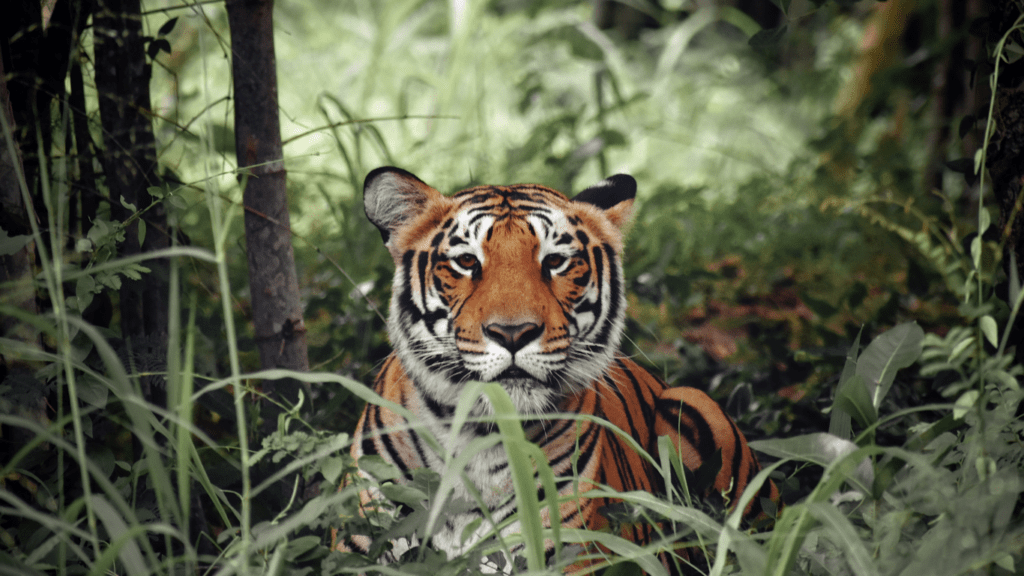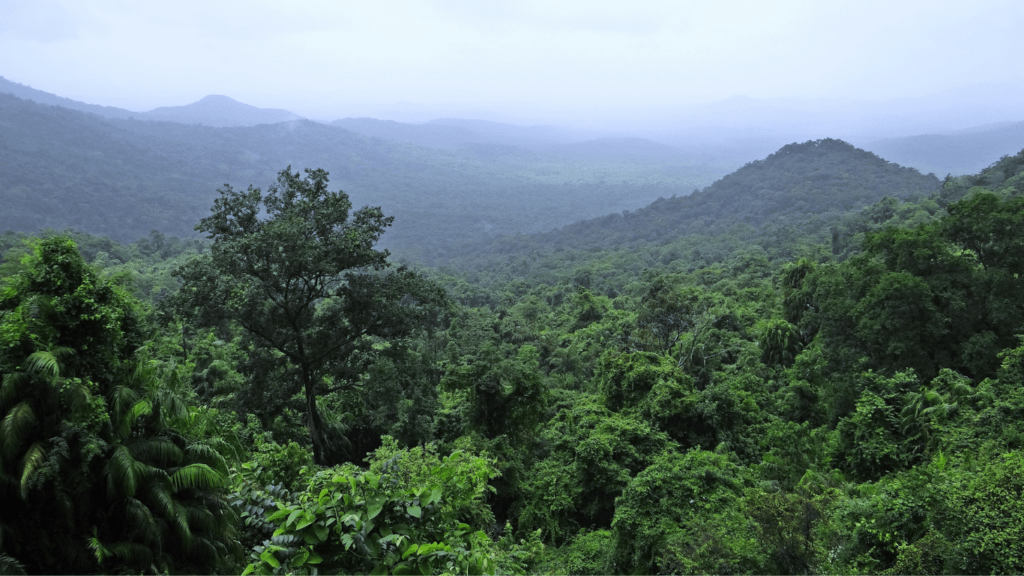Understanding The Importance Of Forest Biodiversity
Forest biodiversity provides ecological stability, ensuring resilience against environmental changes. Healthy forests support a variety of species, each playing a crucial role in maintaining the balance of ecosystems. Tropical rainforests, for example, house over 50% of the world’s terrestrial species, acting as essential reservoirs of genetic diversity.
- Ecosystem Services: Forests offer many ecosystem services, such as carbon sequestration, water purification, and soil fertility. These services benefit not just wildlife but also human populations. In boreal forests, trees capture significant amounts of carbon, helping mitigate climate change.
- Wildlife Habitats: Forests provide habitats for countless species, from insects to large mammals. The Amazon rainforest, for instance, is home to jaguars, sloths, and thousands of bird species. Each species contributes to the forest’s health by participating in pollination, seed dispersal, or predation.
- Medicinal Resources: Many medicinal compounds originate from forest plants. Aspirin, derived from willow trees, exemplifies this benefit. Preserving forest biodiversity ensures a pool of natural resources for potential medical discoveries.
- Economic Value: Forests contribute to local and global economies through timber production, tourism, and non-timber products like nuts and berries. Sustainable management ensures that these economic benefits persist without depleting resources.
Major Threats To Endangered Forest Species
Endangered forest species face numerous threats. Key factors contributing to their decline include deforestation, climate change, and illegal activities like logging and poaching.
Deforestation And Habitat Loss
Deforestation remains a primary threat. Every year, over 15 million hectares of forest disappear (FAO). This directly impacts countless species like the Orangutan and Sumatran Tiger by destroying their habitats. Agricultural expansion accounts for 80% of global deforestation (WWF), driven by the demand for palm oil, soy, and cattle. Urban development also converts vast forest areas into cities and infrastructure.
Climate Change Impact
Climate change significantly affects forest ecosystems. Rising temperatures and changing precipitation patterns alter the natural habitat, threatening species like the Snow Leopard and Golden Toad. Increased frequency of wildfires and severe droughts disrupt forest structure, causing habitat fragmentation. Acid rain from industrial pollution damages soil and plant life, affecting species like the Eastern Hemlock.
Illegal Logging And Poaching
Illegal logging devastates forests globally. It accounts for 15-30% of all wood traded internationally (INTERPOL). Species such as the Rosewood trees face extinction due to high demand for their valuable timber. Poaching also poses a grave threat. Animals like the African Elephant and Bengal Tiger are hunted for their tusks and pelts. Many species are driven closer to extinction by these illegal activities, undermining conservation efforts.
Current Conservation Strategies
Conserving endangered forest species requires effective strategies. Dedicated efforts focus on establishing protected areas, reforesting degraded lands, and ensuring habitat connectivity.
Protected Areas And National Parks
Protected areas and national parks play a crucial role in safeguarding endangered species. Governments and organizations designate regions as protected to preserve critical habitats and biodiversity. For instance, the Yasuni National Park in Ecuador protects the Harpy Eagle and Jaguar. These parks implement stringent anti-poaching laws and promote sustainable tourism, which generates funds for conservation.
Reforestation And Afforestation Programs
Reforesting and afforesting lands restore ecosystems and expand habitats for endangered species. Programs like China’s Grain-for-Green target erosion-prone regions, planting native trees to stabilize soil and increase forest cover. These initiatives combat deforestation, enhance carbon sequestration, and provide habitats for species like the Giant Panda and Golden Snub-nosed Monkey.
Wildlife Corridors And Habitat Connectivity
Wildlife corridors and connectivity projects bridge fragmented habitats, allowing species to migrate and access resources. The Terai Arc Landscape in Nepal and India connects 11 protected areas, enabling safe passage for the Bengal Tiger and Asian Elephant. These corridors reduce human-wildlife conflicts and support genetic diversity, bolstering species’ resilience against environmental changes.
Technological Innovations In Conservation

Advanced technology plays a crucial role in modern conservation efforts, helping to protect endangered forest species more effectively.
Satellite Monitoring And Drones
Satellite monitoring offers a valuable tool for tracking deforestation and habitat loss. By analyzing satellite imagery, I can monitor changes in forest cover over time, allowing for rapid response to illegal activities like logging. For instance, Global Forest Watch provides real-time data on forest conditions, aiding in the preservation of critical habitats.
Drones enhance these efforts by offering high-resolution aerial imagery. I use drones to conduct detailed surveys of inaccessible areas, capturing data on species populations and habitat health. Conservationists deploy drones in rainforests, for example, to track wildlife like orangutans without disturbing their natural environment. This precision enables targeted conservation strategies and mitigates human-wildlife conflicts.
Genetic Research And Species Recovery Programs
Genetic research contributes significantly to species recovery programs. By examining the genetic makeup of endangered species, I can assess genetic diversity and identify vulnerabilities. This information guides breeding programs aimed at increasing population numbers and resilience. The Smithsonian Conservation Biology Institute, for instance, employs genetic techniques to support the recovery of species like the black-footed ferret.
Species recovery programs, combining habitat restoration with captive breeding, aim to reintroduce animals into the wild. I see this approach as effective for species like the California condor, whose numbers have seen positive growth due to coordinated efforts. These programs not only boost populations but also restore ecological balance within forest ecosystems.
Community And Global Efforts
Protecting endangered forest species requires collaboration at both local and international levels. These efforts draw upon the dedication of diverse groups aiming to safeguard our planet’s rich biodiversity.
Local Community Involvement
Local communities play a critical role in conservation. Indigenous groups often possess deep knowledge of forest ecosystems. Studies show that forests managed by indigenous people exhibit lower deforestation rates. Community-led projects, such as agroforestry, integrate sustainable farming with conservation. For example, the Green Belt Movement in Kenya engages local women in tree planting, enhancing reforestation while providing socioeconomic benefits. Another successful initiative is the Guardians of the Forest program in Brazil, where local communities monitor and protect forest lands, reducing illegal logging.
International Agreements And Policies
Global cooperation sets the framework for protecting forests. Major international agreements, such as the Convention on Biological Diversity (CBD), aim to halt biodiversity loss. The CBD’s Aichi Biodiversity Targets provide specific goals for preserving forest habitats. Additionally, the United Nations Framework Convention on Climate Change (UNFCCC) includes mechanisms like REDD+ (Reducing Emissions from Deforestation and Forest Degradation). REDD+ incentivizes developing countries to safeguard forests, benefiting species like the Scarlet Macaw and Bornean Orangutan. Policies from organizations like CITES (Convention on International Trade in Endangered Species) also help regulate trade in endangered species, curbing illegal activities.
| Initiative | Focus | Example |
|---|---|---|
| Green Belt Movement | Tree planting & reforestation | Kenya |
| Guardians of the Forest | Monitoring & illegal logging | Brazil |
| Aichi Biodiversity Targets | Biodiversity protection goals | Convention on Biological Diversity |
| REDD+ | Emission reduction | UNFCCC |
| CITES | Regulating trade | Endangered species protection |
These efforts underscore the importance of both local and global collaboration in ensuring the continued survival of endangered forest species.
Success Stories And Case Studies
Successful conservation efforts demonstrate the positive impact of dedicated strategies on endangered forest species. Examining specific recoveries and effective campaigns provides valuable insights into protective measures that work.
Recovery Of Specific Species
The resurgence of the Giant Panda population stands as a notable example. In the early 2000s fewer than 1,600 pandas remained in the wild. Thanks to China’s intensive conservation programs, including habitat restoration and anti-poaching laws, the population has grown to over 1,800. Another success story is the Iberian Lynx. In the early 2000s, fewer than 100 individuals existed. Conservation efforts, such as captive breeding and habitat improvement, have led to a population surpassing 400.
Effective Conservation Campaigns
The Green Belt Movement, initiated in Kenya, showcases the power of community-led conservation. Since its inception in 1977, the campaign has resulted in the planting of over 51 million trees, reducing deforestation and fostering species habitats. Similarly, Brazil’s Guardians of the Forest program engages indigenous communities in forest monitoring, significantly decreasing illegal logging activities. Both campaigns highlight the effectiveness of grassroots movements in protecting endangered forest species.



 Lead Forest Survival Specialist & Outdoor Educator
Timothy Peters is Whisper Forest Ways’ resident expert on wilderness survival and all things related to thriving in the outdoors. With a background in environmental sciences and over a decade of hands-on survival training, Timothy combines scientific knowledge with practical experience to teach readers essential survival skills, such as shelter building, fire making, and foraging. His approach emphasizes respect for the natural world and sustainability, ensuring that all of his methods encourage low-impact interaction with the environment. Whether you’re new to outdoor adventures or a seasoned explorer, Timothy’s detailed guides and insights provide invaluable knowledge for safely and confidently navigating the wild.
Lead Forest Survival Specialist & Outdoor Educator
Timothy Peters is Whisper Forest Ways’ resident expert on wilderness survival and all things related to thriving in the outdoors. With a background in environmental sciences and over a decade of hands-on survival training, Timothy combines scientific knowledge with practical experience to teach readers essential survival skills, such as shelter building, fire making, and foraging. His approach emphasizes respect for the natural world and sustainability, ensuring that all of his methods encourage low-impact interaction with the environment. Whether you’re new to outdoor adventures or a seasoned explorer, Timothy’s detailed guides and insights provide invaluable knowledge for safely and confidently navigating the wild.
